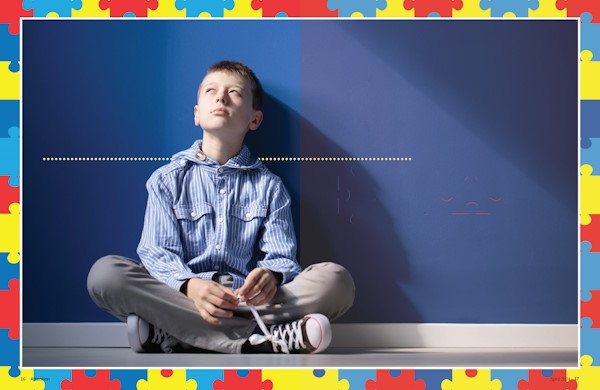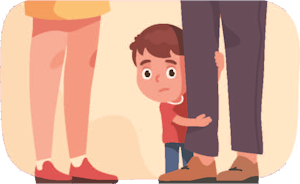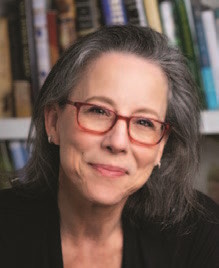Combined ADHD and Autism: How Would You Know?
Elaine Taylor-Klaus, MCC, CPCC
Download PDF
Diagnosing combined autism and ADHD is challenging, as the symptoms vary from person to person. And yet, diagnosis is key to effective treatment. In this article, I will share observations from my practice as a coach and educator for parents of complex kids, offering insights to identify intense young people diagnosed with ADHD who might benefit from being re-evaluated for a diagnosis of autism spectrum disorder (ASD).

The Dark Ages of diagnosis
In 2004, girls ”didn’t” have autism, ten year olds were ”not” transgender, and there were no gluten-free foods in grocery stores or restaurants. When a patient presented with a web of complex, interrelated symptoms and a brain-based condition was assessed, medical providers had to choose between a diagnosis of ADHD or ASD.
That same year, I was a forty-year-old, highly anxious mother whose ADHD and learning differences had not yet been diagnosed. I had three complex children under the age of ten, with a combined eight diagnosed neurological, learning, and mood-related conditions plus two autoimmune diseases. When I asked my child’s psychiatrist whether I could have issues similar to those of my children, she smiled and said, “No, honey, you’re just a mom.”
At that time, I was ”just a mom,” not a provider. But I knew it shouldn’t have to be that hard. There was a lot of support available for my kids, but virtually nothing available to help me as a parent. Lost, overwhelmed, and isolated, I was certain something was missing that we needed know to understand my most complex child. I was often dismissed when I mustered the confidence to assert myself. In hindsight, it’s clear that no one—neither other parents nor my child’s providers—had a clear understanding of, much less a path for navigating, the intensity we were living with every day.
When one developmental pediatrician suggested that my most complex child might have autism, all the other providers adamantly stated they did not. Thankfully, a wise psychologist referred us to a nutritionist who guided us to ”borrow” from treatment for autism while treating the official diagnoses. The results were so significant that the chapter “The Bipolar Child Who Wasn’t” in Kelly Dorfman’s book Cure Your Child with Food reflected some of my child’s experience.
Looking back, nutritional changes for my child curbed the intensity, and coaching for me helped me keep my family on a safe-enough path. But inconclusive diagnosis took its toll on the entire family for decades. At last, twenty years later, an autism diagnosis for my now-young-adult child is opening up doors for comprehensive treatment, helping to address continuing struggles with managing the details of life.
Changing landscapes in diagnostic criteria
Changes in diagnostic criteria for providers opened up possibilities for more nuanced evaluation and treatment after the DSM-5 was published in 2013. Finally, a child could be diagnosed with both ADHD and ASD. Slowly, medical practice began to shift, improving diagnostic range for providers attending to practice issues around ADHD and ASD.
Now, in 2024, an autism diagnosis opens up doors for significantly more support for both parents and children, and services are much more likely to be covered by insurance.
In reality, it takes time for significant changes in the DSM to find their way into general medical practice. Unfortunately, years of missing the nuance in diagnoses, both before and after 2013, wreaked havoc on generations of individuals whose proper diagnosis was not identified, much less treated.
Thomas E. Brown cited current research on the dual diagnosis of ADHD and ASD in his presentations at the 2022 APSARD conference and the 2023 International Conference on ADHD. These studies indicate that fifty to seventy percent of high-IQ youth diagnosed with autism also qualify for a diagnosis of ADHD; one in eight youth with ADHD also qualify for a diagnosis of autism. The two conditions are more frequently intertwined than the medical community ever imagined before 2013.
Now, in 2024, an autism diagnosis opens up doors for significantly more support for both parents and children, and services are much more likely to be covered by insurance. While an ADHD diagnosis still seems to come with stigma and judgment for both the individual and their parents, autism tends to elicit compassion, concern, and understanding for the need for support for children and the adults who support them. There’s still much work to do here, but it’s important to celebrate progress!
From mother to provider: the necessity of invention
Frustrated as a mom whose child was an outlier even for kids with ADHD, I set out to earn my PhD so I could support other parents whose path was as rocky and uncertain as mine. Instead, I became certified as a professional coach when being coached changed the way I communicated with my family, leading to a more peaceful home environment, better outcomes for my kids, and improved family life for all of us.
Diane Dempster and I established ImpactADHD® in 2011 as a global resource to bring training, coaching and support to parents who were as lost and beleaguered as I had been those first ten years. In the thirteen years since, now co-creators of ImpactParents, we’ve been privileged to serve hundreds of thousands of parents and train thousands of professionals around the world.
Our work normalizes life for parents of complex kids, helping them understand behaviors that are outside the realm of typical. By teaching parents a neurodiversity-informed coach-approach, we provide a framework for understanding complex kids well enough to help them believe in themselves, whether or not an official diagnosis explains the nuances of what’s going on in their brains.
In 2021, Dr. Thomas E. Brown encouraged me to provide case studies of the parents I was serving in preparation for a panel presentation for the 2022 APSARD conference on high-IQ teens and adults with ADHD and autism. To my surprise, I discovered a pattern. There was a subset of parents in my private practice who reminded me of how lost and isolated I was in 2004. They arrived in our community with limited hope, extensive stress and fearing that they had no place else to turn for support to help them get their kids back on track.
These parents:
- were more stressed than typical parents of kids with ADHD and related challenges (feeling”desperate” or ”at the end of their rope”)
- had often sought out support from the time their children were extremely young (toddlers or younger)
- had moved from provider to provider, seeking professional support to understand their child’s complexity (often feeling dismissed by providers)
- found that typical strategies recommended by the experts didn’t work for their particularly complex child
- instinctively believed essential information that would provide a better understanding for treatment was missing (often dismissed by providers)
- found themselves simultaneously navigating both extreme emotional attachment and behavior that bordered on abusive from their complex child
- had reached a point where they were setting little or no boundaries to avoid inevitable explosions.
With a few more commonalities, these parents had a great deal in common with each other. They also often shared their experiences as ”outliers” in our larger parenting community. As I argued in my August 2022 article for Attention, if we learn to ask better questions when parents raise concerns about very complex kids—different questions—it could improve and accelerate accurate diagnosis.
Lost generations
The parents were not the only ones to have a great deal in common, however; so did their kids. Many of these children and teens were living in psychic pain—struggling under the weight of mental health challenges where the path forward was cloudy, and their parents’ lack of clarity wasn’t helping. Almost all of them ended up in hospitals, wilderness programs, therapeutic boarding schools, or therapeutic treatment facilities. One nine year old said to her mom after a hospitalization, “I didn’t really want to kill myself. I just wanted the pain to stop.”
As I began to encourage the parents to seek re-evaluation for their kids’ diagnoses, every one of these young people—every one—was diagnosed on the autism spectrum.
Common Experiences of “Very Complex” Kids
Nearly all of these ”very complex” young people had experienced:
- multiple diagnoses that did not fully explain all of their behaviors or intensities
- extreme attachment to one parent
- extreme emotional dependence
- extreme underachieving despite high intelligence
- sleep issues preventing sleeping alone and often interfering with typical sleeping patterns in the family
- treatment (from an early age) focused on one diagnosis to the exclusion of others
 eruptive emotional intensity
eruptive emotional intensity- sensory issues
- dysregulation from extremely young age
- desire for social connection but lacking skills to create it
- unusual and high empathy (often)
- either adopted or family of origin with significant history of mental illness
- wandering tendencies
- history of being bullied or being perceived as a bully
- resistance to treatment or to perform basic tasks for self
- compliant siblings whose issues were not being addressed
- black and white thinking, needing others to follow the rules even if they didn’t
- diagnosis of oppositional defiant disorder, extreme anxiety, or raised questions about pathological demand avoidance
Sampling of Case Studies
While this is not statistically significant data, it suggests that it would be advisable to re-evaluate for autism when very complex kids are not responding well to treatment, were diagnosed prior to 2013, or were diagnosed after 2013 by providers not yet up to speed on the DSM-5.
This is not to say that all complex kids who are not responding to treatment have autism. Diagnosis and treatment of very complex young people may be complicated by years of trauma caused by being misunderstood and/or their challenges not being addressed. Attachment issues must be considered for children who are adopted. Accurate, nuanced diagnosis must be teased out by sophisticated medical providers.

Most parents of complex kids are doing a Herculean job of holding it all together. They shouldn’t have to feel desperate to justify seeking support.
What families need from providers
Diagnosis and treatment of complex neurological challenges like combined ADHD and ASD rely on a symbiotic relationship between providers and parents. And that, too, is complicated. In matters of mental health, medication can work magic, but it’s incomplete. Behavior management is complicated and nuanced. It influences a parent’s mindset, informs their responses—and is critical to a child’s treatment at any age. When parents’ experience is validated and understood, parents can be part of diagnosis, helping providers see when there’s something missing and achieve more accurate diagnosis.
As a provider, I am not a diagnostician. Perhaps because of that, parents often share their child’s most difficult behaviors with me in a way that they don’t share with their child’s providers. It’s not because they don’t trust them. It’s because parents are embarrassed; because they don’t realize that their experience is relevant to their child’s diagnosis; and because providers typically don’t yet think to ask more nuanced questions about the family environment.
Most parents of complex kids are doing a Herculean job of holding it all together. They shouldn’t have to feel desperate to justify seeking support. As soon as a child is suspected of or diagnosed with any brain-based condition, providers should refer parents for support and guidance.
Providers, parents need more direction from you. They need your leadership and ”permission” to seek support for themselves to help them navigate their family dynamic. Set appropriate expectations that there’s no easy fix, that they’re not alone, and that there is support available for them. Encourage behavior modification therapy for all complex kids, including (or especially) teens and young adults. And look for signs of super-stressed parents whose very complex kids may need a more nuanced diagnosis.
It’s not enough to give parents a few websites and hope for the best. When parents join a community of their peers, or work with a well-informed practitioner, they are able to see when their children are outliers. Otherwise, parents have no way of knowing whether their experience and feelings of desperation fall outside of typical boundaries for raising kids with ADHD. As one mom said, “I needed help to put the pieces together to help this kid learn to understand herself.”
 Elaine Taylor-Klaus, MCC, CPCC, is a master certified coach, the CEO of ImpactParents, an expert in neurodiversity-informed coaching, and the mom to three complex young adults.
Elaine Taylor-Klaus, MCC, CPCC, is a master certified coach, the CEO of ImpactParents, an expert in neurodiversity-informed coaching, and the mom to three complex young adults.
ADDITIONAL READING
Thomas E. Brown, ADHD and Asperger Syndrome in Smart Kids and Adults (Routledge, 2021); also “Adapting Evaluation and Treatment of ADHD for High IQ Kids and Adults on the Autism Spectrum,” 2022 APSARD Presentation (abstract: https://apsard.org/wp-content/uploads/2022/06/2022-APSARD-Abstract-Book-.pdf).
Steven P. Hinshaw, Straight Talk about ADHD in Girls: How to Help Your Daughter Thrive (Guilford, 2022); also his presentation at the APSARD 2022 annual conference: “ADHD in Girls and Women: Historical Perspectives, Current Realities.” (abstract: https://apsard.org/wp-content/uploads/2022/06/2022-APSARD-Abstract-Book-.pdf).
Elaine Taylor-Klaus, “Underestimated, Undervalued, and Underutilized,” in Attention, August 2022.
Kelly Dorfman, Cure Your Child with Food (Workman Adult Reprint Edition, 2013).
Other Articles in this Edition
Becoming Comfortable in Your Own Skin
Understanding ADHD from a Strengths-Based Perspective
From Meltdowns to Calm: Helping Children and Teens with Emotional Regulation
ADHD and Family Conflict: How to Reduce Verbal Aggression
Combined ADHD and Autism: How Would You Know?
Does Adult ADHD Increase the Risk of Dementia?
Do Older Drivers with ADHD Outgrow Their Crash Risk?
